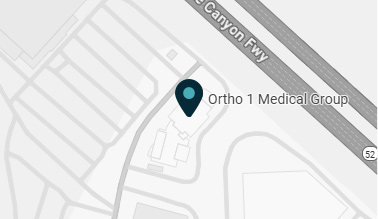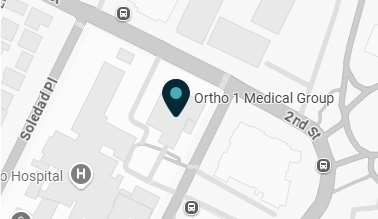Orthopedic Specialists in San Diego, Carlsbad, Coronado, CA
Foreign body removal in Orthopedics involves a series of steps to locate and safely extract an object embedded in the bones, joints, muscles, or soft tissues. The goal is to prevent or treat complications such as infection, pain, impaired movement, or tissue damage. Ortho 1 provides advanced minimally invasive treatment in San Diego, Carlsbad, Coronado, CA, combining expert surgical skill with the latest technology. Ortho 1 also delivers personalized care throughout your recovery. Contact Ortho 1’s office to schedule an appointment today!
- San Diego
- Carlsbad
- Coronado
What is Foreign Body Removal?
Foreign body removal from an orthopedic perspective refers to the surgical or non-surgical extraction of an object that has entered and remains embedded in the musculoskeletal system (bones, joints, muscles, or soft tissues). These foreign bodies may be metallic (e.g., shrapnel, bullets, nails), organic (e.g., wood splinters), or inert (e.g., glass, plastic).
What are the Indications for Foreign Body Removal?
Orthopedic removal of foreign bodies is typically required when:
- The object causes pain, infection, or inflammation
- It restricts joint movement or muscle function
- It leads to nerve or vascular compression
- It is visible on imaging and poses a long-term risk
What Does Foreign Body Removal Involve?
The procedure for foreign body removal in orthopedics involves a systematic approach to safely locate and extract an object embedded in the musculoskeletal system. It begins with a thorough clinical evaluation, including a detailed history of the injury and a physical examination to assess for pain, swelling, infection, or functional limitations. Imaging studies such as X-rays, ultrasound, or CT scans are used to accurately locate the foreign body, depending on its material and depth. Once identified, the removal technique is chosen based on the object’s location - superficial foreign bodies may be removed under local anesthesia in a minor procedure, while deeper or more complex cases require surgical removal under regional or general anesthesia. During the procedure, a precise incision is made over the site, and careful dissection is performed to expose and extract the object using forceps or specialized instruments. Intraoperative imaging may assist in localization if the object is deeply embedded. Surrounding tissues are cleaned (debrided) to reduce the risk of infection. After removal, the wound is irrigated, closed with sutures if appropriate, and dressed.
What Does Postoperative Care for Foreign Body Removal Involve?
Postoperative care for foreign body removal involves monitoring the wound for signs of infection, managing pain, and promoting healing. The area is kept clean and dressed properly, and the patient may be prescribed antibiotics if there was contamination or infection risk. Tetanus prophylaxis is given when necessary. Follow-up visits are scheduled to assess healing and ensure no residual foreign material remains. In some cases, especially when joints or muscles are involved, physical therapy may be recommended to restore mobility and function.
What are the Risks and Complications of Foreign Body Removal?
The risks and complications of foreign body removal include infection, bleeding, nerve or blood vessel injury, incomplete removal, scarring, and chronic pain. In some cases, removing a deeply embedded object may cause damage to surrounding tissues or lead to functional impairment if near joints or tendons. There is also a risk of foreign body reaction or recurrence if any fragments are left behind.
If you would like more information about foreign body removal or are considering foreign body removal, please contact Ortho 1, dedicated to serving the communities of San Diego, Carlsbad, Coronado, CA.




















